Text:’White’ by Richard Dyer
p.457
- Can whiteness be a category -like eg. Blackness in film?
- Most ‘minority’ analysis – on women, black, gay etc…. concentrates on how these groups are portrayed and represented, as part of the analysis of the way they are subordinated
- But concentrating on these groups, without showing ‘the norm’ alongside them reinforces their ‘oddity/ differentness’.
- Concentrating on the ‘norm’ eg the dominant category can also work to redress the balance – this has mainly been done with an analysis of the construction of ‘masculinity’
p.458
- the author states that it is ok for a writer on the ‘dominant’ to be part of the dominant group ( eg. White and male). He should not go overboard on self criticism, but must acknowledge it may have an effect on his writing.
- White v black is not just about ethnicity, and we have many everyday examples where the norm is white cf black.
- White is light v black is dark- safe v dangerous
- White is good and black is evil- the bible. Even these which may seem obvious are constructed….. it’s certainly possible to think of light/white as dangerous and black/dark as safe ………examples…
- Black is often thought as a colour and white as a background or nothingness (white paper, white light) . Scientifically white is all colours and black is the absence of colour.
- This resembles the idea that the ‘norm’ is white= everything, and black is somehow different.
- Even in calls to the ‘nation’ (which seem inclusive of many groups), does it really include Black -in the case of Britain- or is white an underlying additional assumption of the norm here??, like we assume whiteness in addition to the norms of class, gender, heterosexuality……
p.459
- Because it’s often assumed in the background whiteness is often hidden as a category in itself ( except in extreme case such as racism…)
- It also makes it hard to analyse…. Unlike black. So we have the eg. Brief encounter which becomes about middle class- not White, but we have The colour purple which is about Black, before poor…….
- The film ‘Being white’ shows vox pops of white people who ,in practice, are unable to define themselves as white, but always as subcategories of white- eg. Jewish….
- Dyer suggests several areas that might be useful in analysing this difficult characteristic of ‘white’- eg. Portrayals of white in racist extremism, or in non-white film. Or if exchange white characters with black ones in iconic white films…..- what does it say about whiteness? (the commutivity test)
p.460
- All these methods need to contrast white with non-white (and this is not the case with the analogous analysis of say portrayal of blacks, or American Indians).
- Three cinematic films are mentioned where whiteness is analysed through the presence of non-white others, Simba, Jezabel , and Night of the Living Dead. The three cover a wide range of cinema characteristics (budget, style, subject etc…)
- Definition coterminous=covering the same area.
- Dyer looks at what is similar about the portrayal of whiteness in all 3 (diverse) films, but admits that due to whiteness’s resistance to being categorised there is an inevitable massive variation in whiteness in films.
- Nevertheless, ‘all 3 films share a perspective that associates whiteness with order, rationality, rigidity….’ (ref) and a sense (in very different ways) that whiteness is being contested.
- p.461
- all 3 make reference to potential loss of dominant state of the whites-Simba- the uprising of the Mau-Mau against British occupation, Jezebel-the abolition of slavery in the USA, and ‘Night’ (implicitly) the various power struggles of the black people in 1960’s USA.
- Dyer says that the sense of otherness in these films is based on ‘existential psychology’- introduced by Sartres where ‘an individual becomes self-aware by perceiving its difference from others’ (this sounds a little like Lacan’s mirror phase, but this involves a misapprehension/false perception about ‘no difference’ with another individual (the mirror image)
- This existential pysychology has been discussed by numerous authors , but Dyer concentrates on how it is played out in the films…
- In each film Whites are dominant but dependent upon Blacks in some way, and they realise this (differently) in all 3 films.
- This dependency delegitamises the white dominance, and Dyer’s fascination is in
- how the films struggle to hang onto a justification of white dominance, however difficult it is to do.
Simba
- The film is British, and is a ‘colonial adventure’ story, where the hero achieves ‘personal growth’.
p.462
- Dyer describes the film’s narrative as a discussion of the serious issue of the Mau-Mau uprising, with different symbolic groups or individual people representing different attitudes to the problem
- Finally, the hero (Alan) is the main symbol- his growth is allowed through engagement with the problem.
- The film involves a complete binary separation of the black and white cultures -with no in-between or meeting.
- This separation is achieved through cinema effects (symbols…..)
- Basically white is rational, safe, organised modernity etc… and blackness is the complete antithesis of this….
- The meetings of the whites and blacks are contrasted to illustrate how they represent these characteristics.
- The whites- early evening, light, indoors, ‘high-key lighting’, orderly, speech only,
- The blacks- the binary opposite, including excited gestures, unintelligible speech, and physical movements such as daubing with blood and entrails….
p.464
- |The idea of ‘boundariness’ is used throughout the film, characteristic of dominant groups in general they have boundaries- eg. Rows, order, uninterrupted speech……but also the setting of boundaries is characteristic of the white/male especially .
- Dyer says the film is racist ‘in the broadest sense’, but not the narrower one. The film believes that the blacks can evolve and achieve all the progressive characteristics of ‘whiteness’.
- Several liberal characters believe in the ability of the Mau-mau to do so (including, in the end, the hero Alan), whereas the conservative whites do not.
- As a reinforcing of this potential, the character of Peter is black and specifically has all the necessary characteristics (Doctor, educated, rational, humane, liberal….) of Whiteness.
- But- those who believe in the potential evolution are subordinated to others in the film, and in the end liberalism is overcome, Peter dies, and the whites rescue Alan’s farm from the Mau-Mau attack.
- The film believes in the possible evolutionism of Blacks to whiteness (though it fails in the end), but this Fixity of ideas about how colonised people should act (to be ‘better’ people-more like the colonisers) , or more generally in the how we see the behaviour of any ‘other’ group, is ‘deeply disturbing’ (ref).
65
- The opening sequence is discussed- how filmic techniques are used to symbolise the binary opposites of white and black. Eg. The white viewpoint is given by, steady aerial shots (give the best view), modernity of the plane, bringing the hero to Africa. Black characteristics include pain, blood, death, fear, untrustworthy, primitive.
- Binarism is shown by both the film techniques and through the narrative.
- Aspects of the hero include- resolving the conflict, his adventure and personal growth,
- Colonialism as a landscape allows white males values to flourish, it holds, adventure, discovery, needs taming, conquering etc….
- It also requires ordering, rational control , authority….etc…
- Through his development of responsibility through the film, he wins the love (and hand) of Mary
p.466
- other films have explored the idea of colonialism eg. Black Narcissus.
- They often end in acknowledgement of failure
- The hero Alan also fails throughout the film…….. he fails to keep the farm, to protect Peter, to catch the Mau-mau leader……..
- The failure shows an anxiety towards the Black threat of the mau-mau.
- Simba endorse white superiority of values, but shows an anxiety that they will work against the problem (blackness).
..in your blog
Watch the films Simba, Jezebel and Night of the Living Dead or at least Simba.
Find The Battle of Algiers (Italian: La battaglia di Algeri), a 1966 black-and-white film by Gillo Pontecorvo based on events during the 1954-1962 Algerian War against French rule. xxxiii This late neo-realist film is in stark contrast to Simba and the comparison is worth the effort.
• Note how Dyer uses some of the theories alluded to earlier in the course (hegemony and Sartre’s ideas of the self) to analyse the films and construct his argument.
• Over the period of a week, see how racial identity and identities are dealt with in the visual media: film, newspapers, the web, any exhibitions you might visit, advertising images and, particularly, the television. Make notes, illustrated where possible, of your analysis, taking Dyer as your model.
Night of the Living Dead
I decided to look at this film instead of Simba, as it is one of my favourites. here is my analysis (film timings precede the text).
2.08 : An American flag shown in the cemetery- the US national sign, and all it signifies, be it heroism…or colonialism and racism.
This is the initial sign of the paradigmatic symbolic differences which are suggested throughout this film – White V Black, Good v Evil, Dead v Alive. These are key vehicles for the director to discuss an underlying discourse throughout his text (Pooke and Newall, 2008: 104)
3.00: Johnnie is a typical American- and portrayed as too selfish to want to come and visit his father’s grave- he even makes a sick joke of it- and is harangued by his sister Barbara. Both are very American looking (fig.1)- white, 60s clothes, blonde, and they reinforce the status quo of white USA- compared to Blacks.

Fig. 1 Typical White Americans
5.17: Barabara prays at the grave – he continues to make jokes- this is setting up a dualism between seriousness and frivolity. Johnnie jokes the iconic ‘‘they’re coming to get you Barbara’.
At this point in a White 60’s USA the audience might legitimately ask Who? It could be ghost and ghouls- or other symbolic enemies of 1960’s white USA- Black people, The Soviet regime, Vietnam…
10.00 The mise en scene for the film is USA old country, old gas stations, dirt roads, very hillbilly like.
This suggests a certain ‘good old days’ mentality and a foreboding of white racism and violence. The house Barbara escapes to is run down and she is scared shitless. The music is dramatic with visual filmic shocks such as fast edits to a stag’s head on the wall. This may remind us of the scary house in ‘Psycho’.
13.10: More zombies appear -the house is surrounded by THREAT.
14.00: Ben, the hero and most important character in the film, appears. At first it as if he might be a threat too- from how he is filmed- but he’s not- he realises they are both (he and Barbara) in danger (fig. 2), and the good guys (alive not dead)- and they both get in the house. He says ‘it’s alright’, showing calmness and power and control, and the dramatic music stops as if some calm has appeared.
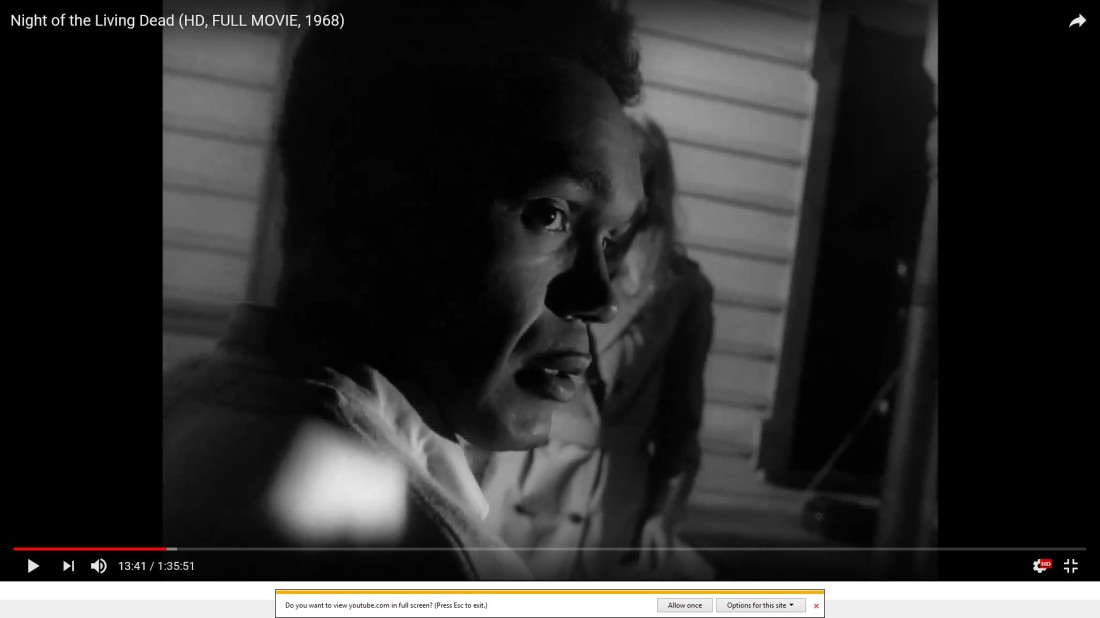
Fig. 2 Ben realises that Barbara is alive and needs his help.
Ben is very symbolic. He’s tall, good-looking, well spoken, kind and brave. These paradigmatic characteristics are very obvious throughout the film and are reinforced by the suggestion of their opposites in the characters, action and dialogue during the film. In fact the film concentrates far more on the relationships between the humans than on zombies. The ‘problem’ with the hero Ben is that he is not white- he’s black. This is an obvious deconstruction of the typical American Hollywood male movie star (Clarke Gable, Charlton Heston…..). This film concentrates on the deconstruction of the postcolonial symbols of white America in the 1960’s, hinting at white supremacy, racism, occidentalism and many more. Ben is male however, and the film spends no time on deconstructing the man v woman duality. Feminists will find little here to be happy about, as the women of the film are portrayed as typically female- weak, emotional, frightened, and hysterical.
14.20- Ben is acting rationally and calmly (eg. ‘the pump is out of gas’), thinking about escape. Barbara in contrast is full of terror and emotion. He also wants to find some food, and get to where other people are.
15.00 When Ben sees the half-eaten body, there are no sound effects- its calm, but when Barbara is seen we get cheesy melodramatic music. Cut again to him and the music stops. This is symbolic enactment of an argument /dialectic about the Rational (and Enlightenment) V Emotion and superstition.
17.50: The first dozen zombies are all white men. Is this representative of USA society in the sixties (note we appear to be in the deep South by the accents- so racism is more endemic). Does this symbolise that POWER is held by White males in USA society at this time (power which needs to be defeated both in the film and symbolically of course). The way the director uses white here increases the power of Ben’s threat toward the status quo. He threatens mainly white zombies, but more generally white society. Through his importance as the hero, Ben ‘throws the legitimacy of white domination into question’ (Dyer, 1999:461).
19.28: Ben rationalises over a dead zombie- ‘Don’t look at IT’ . He lights a fire to stave off the zombies (light = good, dark= evil) .
Are there also suggestions of the Ku Klux Klan but in reverse here- Ben is igniting white men (fig. 3)?

Fig. 3 Fire to ward off white American zombies
21.27: Ben gets frustrated with Barbara-but checks himself and acts compassionately- as a hero should.
21.49- He talks to her as if a white is talking to a Black. A major part of a colonialist ideology is the idea that blacks (or any peoples) who could not understand English were somehow stupid, and also savage and primitive .Here Ben addresses Barbara almost as if she is the ‘ignorant black savage’ of colonial ideology. eg. ‘Do you understand? ok?….ok? ‘ Barbara is dumbstruck and unintelligible.
This is a deconstruction of social mores, and the colonialist attitude to blacks and the Oriental ‘other’. The heads on the wall of the white farmer’s house (fig.4) implies they the whites are rather savage, primitive etc. again deconstructing the symbolism of the savage black native.
 Fig. 4 Signs of the primitive in the white farmer’s house
Fig. 4 Signs of the primitive in the white farmer’s house
24.34: Ben includes her in the work in a small way- to help her become less paralysed with emotion. He is a good manager (‘pick out some nails-the biggest ones you can find…’) he says. At 26.36 he describes an encounter with a gas truck and zombies photographically accurately and analyses it as if he were Sherlock Holmes. He symbolises Intelligence and rationalism, not ignorance and superstition (more traditional characteristics applied to ‘the other’ non- white races.
29.30-: When Barbara finally starts speaking she talks about Johnnie, her brother. He starts to listen politely, but as she carries on he starts to work again, without telling her to stop babbling, suggesting he is Good and Kind. Shouting at her when she’s in shock would be counter- productive.
31.55: Barbara gets hysterical and hits Ben, and he punches her. She faints and he seems regretful, but puts her on the sofa with care and gentleness (fig 5), and opens her coat (she said she was hot earlier). At this point a fresh observer might think ‘Oh no he’s going to rape her’ if he had a racist ideology, as the portrayal of blacks as hypersexual is an important part of the colonialist discourse (Doanne, 1999: 449). This may have been the status quo reaction to a black man/white woman situation like this at this time in the USA.

Fig. 5 Ben treats Barbara with gentleness and concern
32-45: The radio announces that murders are taking place by an unidentified army of assasins, with no organisation or apparent reason for the slayings. Ben in contrast continues to methodically work on hammering wood, showing that he is the opposite of the zombie, and of the ruling powers (the Bourgoisie)- who are having problems controlling this mayhem in their society (the radio reports a deluge of calls to police- who don’t know what to do!)
The question of the other in relation to the zombie has to be part of this film’s function, even if it seems secondary to the racial arguments. Are zombies an apotheosis of nothingness? They seem to have physical movements, but no language, no intelligence, and are driven by instincts and ‘drives’- in Freudian terms they seem to be the id compared to a human’s more complex id, ego and superego. Romero suggests that the zombie is the equivalent of the human id- that humans driven by desires subconsciously, even whilst they negotiate their way through life with preconscious control . Importantly Freud believed that a tension is present due to the subconscious/preconscious elements of the human existence, and that may manifest in several ways which include ‘psycho-neurotic’ behaviour (Pooke and Newall, 2008: 117). It seems likely therefore that Romero believes that zombies represent some aspect of the human itself.
34 57- the radio reports that the president has called a cabinet meeting. High ranking scientists are to be brought together. All arms of Power and Society are pulling together against the problem. Here we have all the organs of power (in Marxist terms, the ruling class or Bourgeoisie) trying to solve the problem. The president is the most powerful figure on earth, and in charge of the most powerful country-at least in the late 60’s. This sets up the question are the bourgeoisie up to this problem posed by apparently simple and unintelligent beings?
36-42: The radio is on and the transmission of info is taking place just barely audibly- but continuously, as if just in/out of our consciousness. Ben rests for the first time and has a cigarette. I am reminded that even God rested on the seventh day and saw that his work thus far had been good.
38-44: ‘Look I don’t know if you’re hearing me’ Ben says to Barbara, who has woken, but still seems in a trance/mute/staring eyed.
In fact Barbara seems very like the zombies who are threatening the house- the paradigmatic opposite of Ben. This is no feminist movie.
40-52: For the first time other people emerge from the cellar- aggressively posturing to Barbara as if she is the enemy here (fig.6). The people are very touchy. The more level-headed Ben is instantly sceptical about them- suggesting they’ve been cowardly hiding in the cellar, and not even got their excuses/story straight. This touchy aggressiveness may be an allegory of the 50-60 s cold war between USA and ‘the other’- whether it be Communists, Soviets, Chinese. This cold war touchiness was epitomised by the Cuban missile crisis in 1962.

Fig. 6 Tensions run high for Mr Cooper
43-00: Ben and Mr Cooper argue about whether upstairs or downstairs is the safest place to be. The young man tries to act as ‘smoothing the waters’ but Cooper is adamant and aggressive and will not budge his ideas- however much things are explained rationally by Ben. Mr Cooper symbolises Fear, aggression, ignorance- all packaged in a white man. This man is threatened by Ben both physically and emotionally.
44-54- We have the first glimpse of 2 female zombies (fig. 7).

Fig 7 Two female zombies appear
47-50: Ben says to Cooper ‘…get the hell down in the cellar- you can be the boss down there- I’m boss up here’ in a clear reference to a power struggle within the microcosm of the house- the splitting off of groups into us and them. This seems to take precedence over the battle with the zombies at this point.
51.40: Mr Cooper and his wife Helen fall out over the plan- she thinks it’s stupid to stay downstairs with the radio (representing the power of information) upstairs. She makes it clear in her discourse that they are both unhappily married! So Mr Cooper is portrayed as not just aggressive and touchy, but also stupid, and a poor husband. The deconstruction of the supposed supremacy of whites and white men especially is relentless.
55.00: Cooper sounds off but does nothing useful. His wife says ‘Why don’t you do something to help somebody’.
56-47: The radio reports that a committee has ‘established’ that the unburied dead are coming back to life.
Here the powerful establishments of government and media are telling the masses what’s going on, the announcement coming from a typical ‘newsroom’ with lots of ‘workers’, typing, working, being busy (Fig. 8). This represents the Bourgoisie. It seems that the director Romero wants us to know that the Bourgoisie – the government, the ruling classes, the bosses, and the media , are transmitting ideology- and we may be best to treat the information with caution. Interestingly there are different possible scenarios within Marxism about the amount of power which the media has to moderate the bourgeoisie message (see Base and Superstructure from my BLOG) . Here we have a suggestion (the typing, the ‘work’ atmosphere of the newsroom) of a Classical Marxist attitude that the Media deliver the ruling classes’ message. Alternatives exist such as the pluralist view that the media are autonomous from the ruling classes.
 Fig. 8 The media deliver the bourgeoisie message about the crisis.
Fig. 8 The media deliver the bourgeoisie message about the crisis.
57-27: The newsman says that they now have a plan- rescue stations are being set up, as if this will be the solution.
This suggests White over-optimistic thinking by the Bourgoisie, and seems to poke fun at the ludicrousness of it all.
58-33: Radiation is mentioned as a possible cause for the first time. Radiation emanating from outerspace, from a destroyed satellite probe from venus. At this point the Space Race between the Russians and USA was underway- and the USA would soon put the first man on the moon.
59-00: The news channel shows a disagreement between the doctor, the General and the Politician as to what the plan is. They (the POWER groups) seem unprepared and disunited.
1.03- The people in the farmhouse, for the first time, seem to act together in a plan. Judy talks to Tom- ‘if I could only call my folks….’ Showing her vulnerability and separation from family. At 1.06-40 we have tender music, and a tender scene between these two lovers. She’s worried because he needs to get the truck-so will be in danger, they kiss. They will both be dead soon.
1.11.37: We can see a bug on the screen. Is it on the camera or on the window which Mr Cooper looks out of ? If it is on the camera then it suggests it has been left there (not edited out) to deconstruct the film. This technique tends to free up the observer from becoming part of the action, and allows him/her a degree of dispassionate objectivity about the issues in the film (Mulvey, 1999: 389). We are being told that this is not a true story- but is a made up film- reinforcing the idea that the director is delivering an important political message, not telling a story.
 Fig. 9 A bug lands on the camera to deconstruct the film?
Fig. 9 A bug lands on the camera to deconstruct the film?
At 1.12 41s the zombies threaten Ben on his own. Ben then sees that Mr Cooper would not let him in- because he is a coward or perhaps he wants him dead? Is this overt racism? After a practical session where both men nail up the broken door together to make it safe, Ben punches Cooper in anger. Throughout this fight scene the music remains the same as that which accompanies the zombie v human threat suggesting that Mr Cooper is as big a threat to ben as the zombies.
1.17 : Ben says to Cooper ‘who knows what kind of disease those things carry’- in relation to his daughter who has been bitten by a zombie.
1.18/27: Government scientists continue to report that radiation is rising and this means dead bodies will continue to come back to life
1.18 54: shots of ‘vigilante type gangs’ (fig. 10). The advice from the Government and media is ‘Kill the brain and you kill the ghoul’ .
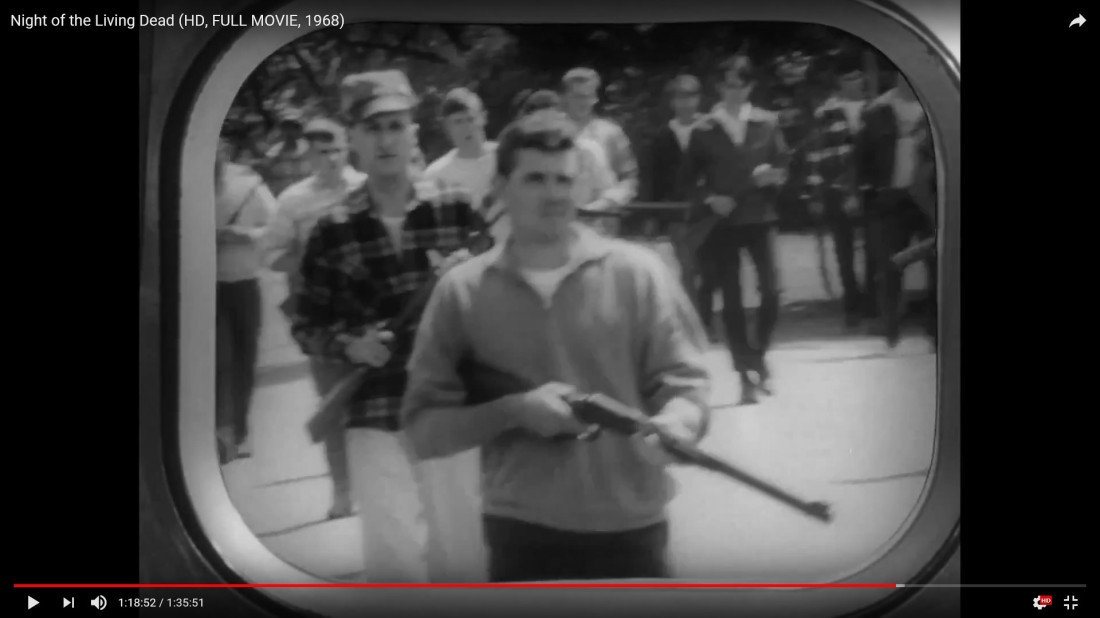 Fig. 10 A Zombie hunting gang
Fig. 10 A Zombie hunting gang
1.20: Chief Mclelland is interviewed by a journalist and seems upbeat. The journalist asks him if they’ll be able to wrap it up in 24 hours. Here there are shades of the ‘Great War’ or more recently and more American the Vietnam war- both of which lasted for much longer than initially hoped. Again this deconstructs a typical Hollywood film where the American army are shown as all-powerful and good.
1.12 24: Mr Cooper plans to get the gun off Ben- as if he is the enemy-not the zombies. He gets the gun whilst Ben fights off zombies- and tells his wife to get down in the cellar. Ben then gets the gun and shoots Cooper fatally (fig. 11).

Fig. 10 An enemy is shot by the hero
1.24 30: Barbara breaks out of her trance to defend Mrs Cooper from Zombies and Mr Cooper’s child begins to devour his body. Then the child kills her mum with a brickie’s trowel in a scene which is reminiscent of the psycho shower scene.
1.26 06- Barbara sees Johnnie as a zombie- and treats him as if he’s still human (‘help me’) and embraces him. They kill Barbara, and overrun Ben- who escapes to the cellar.
1.29-30: The morning, quiet and birdsong suggest that the action has finished now. A gang gets near the house- helicopter, men, guns, uniformed officers, dogs, they are all white (fig 12). Here there are suggestions of 1960’s civil rights demonstrations and the violence which accompanied them.

Fig. 12 Dogs and policemen
1.33. 39: Ben hears their gunshots and goes up to investigate. The men shoot him ‘right between the eyes’ (fig. 13) and he dies instantly.
 Fig. 13 Chief Mclelland tells the man to shoot Ben
Fig. 13 Chief Mclelland tells the man to shoot Ben
This is the ultimate deconstruction of a heroic Hollywood ending to a movie (eg. The Poseidon adventure). Near the end of the film everyone else is dead – except the hero man (who is black), and he too is then shot without any fuss and with no drama. But there is no preamble about whether Ben is a zombie- the gang have no reason to suspect he is- he does not look like one- there is no attempt to find out. This could be just the murder of an innocent black man. They use meat hooks to drag him to a truck and load him on like a piece of meat. They burn him on a bonfire, like jewish victims of the holocaust. The end of the film is an anti-climax – nothing resolved or accounted for.
Illustrations
Fig 1-12 : Youtube: Night of the Living Dead (HD, FULL MOVIE, 1968) (2013) online at
https://www.youtube.com/watch?v=-_f2Enn8x5s [accessed 14 Dec 2017]
References
Doane, M. (1999) ‘Dark continents :epistemologies of racial and sexual difference in psychoanalysis and the cinema’ in visual culture: a reader. Evans, J and Hall, S (eds.). London. SAGE Publications. p. 448-457
Dyer, R (1999) ‘White’ in visual culture: a reader. Evans, J and Hall, S (eds.). London. SAGE Publications. p. 457-467
Mulvey, L. (1999) ‘Visual pleasure and narrative cinema’ in visual culture: a reader. Evans, J and Hall, S (eds.). London. SAGE Publications. p. 381-389
Pooke, G and Newall, D (2008) Art History. Abingdon. Routledge
Examination of racial identity in the media
I was a little anxious about this exercise because I figured that any discussion of race identity in today’s UK media must necessarily be based on evidence which was far more subtle than for example the cinematographical evidence of colonialist racism in the 1950’s film ‘Simba’. My work has explored racial identity fairly broadly, and is based on selecting elements of mass media which included a racial theme, and expanding on the issues involved.
I was certainly aware that I picked out only examples of Black racial identity from the media. In hindsight this has everything to do with what Richard Dyer describes as ‘the colourless multi-colouredness of white people (which) secures white power by making it hard ….to ‘see’ whiteness’ (Dyer, 1999:459). Essentially I seemed able to carry out the exercise only when the black example was available- because whiteness as a category is nebulous and difficult to analyse.
Sun 22 Oct. 2pm.-A black continuity man on R4 (Neil Nunes-fig.1) has a noticeable jamaican accent – but he still sounds rather ‘received English’.
Fig. 1 Who has the most irritating voice? (2017)

Here we have a very common media response to a more enlightened (western) existence. The BBC is attempting to redress the balance and make the BBC more representative of the UK and its audiences. It certainly started off at a very low bar. I remember in the 1980’s that there were hardly any black faces (or voices) on the news. We now have a lot on the news, current affairs etc, eg. Michelle Hussain, Rageh Omaar, George Alagiah. In fact lord Hall of the BBC has pledged that ‘to improve diversity (we) will see one in seven presenters and actors being black Asian, or from an ethnic minority’ (The Telegraph, 2017).
However, what of the fact that this Jamaican accent is boxed up in a rather posh, ‘BBC’ type enunciation? It seems a little like the colonialist idea that the Whites will help the Blacks to progress by helping them become more white- eg. In the film Simba. Certainly there are other presenters/announcers who sound unashamedly non-white on TV- for example a continuity announcer on Channel 5 (I think) who has an amazingly real Carribean accent-which actually makes her quite difficult to follow, but is very refreshing!
Additionally the rather non-threatening (politically non-powerful) nature of the news caster (who’s job is simply to read the news, not to make any) seems to me to make the idea of ‘tokenism’ in this essentially non-powerful job a little more ‘white’. Is this desire for representation continued in the real positions of power in the UK ? (see later). It is interesting that Neil Nunes was voted in 2011 as having the most annoying voice on radio 4 when Richard Ingrams polled the readers of ‘The Oldie’ (a magazine for old people)- and the result was suppressed by the BBC (The Telegraph, 2011).
7 pm. Radio 4 news- Robert Mugabe has been stripped of his WHO AMBASSADOR for World Health after world condemnation
Fig. 2 What Mugabe told the party conference yesterday (2016)

Robert Mugabe has been a staple of the British news for many years. In some sense it is unfortunate that such an unreasonable, ignorant, and laughable black man gets such a lot of air time on UK media. However I must confess that my attitude towards him is almost totally media driven, and I have little knowledge of the Facts (as opposed to the BBC’s version of the facts). Although I think I am able to rationalise my ridicule about his dress sense (which often seems whacky to a Westerner like me- which itself may be a prima fasciae example of my colonialism and racism) , his reported anti-democratic actions, and his control of an ailing country (including AIDS sufferers who are not prioritised for healthcare), am I as a white man really entitled to judge this man ?
I do question whether the man is as evil as he is made out to be . At least, perhaps he has some mix of good and bad in him. My problem is with a BBC who do nothing to discuss the question of the colonialist White Rhodesia, or any possible connections between the problems of (now thankfully) Black ruled Zimbabwe, and any overhanging legacy which the country bears from those racist days. Mugabe was, at least, a defender of the independence of his home country from colonialist rule. What counts for Zimbabwe and Mugabe here, could equally well apply to many other difficult and problematic post-colonialist African countries (and leaders). The issue of Mugabe and Zimbabwe for a white UK observer is therefore inevitably problematized- in a similar and related fashion to Dyer’s own admission that his whiteness must be acknowledged throughout his essay, though it does not negate anything he has to say on the issue of white (and implicitly his discussion of non-white) (Dyer, 1999: 458-9).
8.55 pm Internet headline: Evening Standard apologises for cropping Solange Knowles’ braids in cover photo
Fig. 3 solange-knowles-tells-magazine-dont-touch-my-hair (2017)

Solange Knowles (Fig.3) – a very high profile black female singer has criticised the Evening Standard newspaper (who’s editor is the ex- chancellor of the exchequer George Osborne and thus would seem very UK establishment- white, male, middle aged, rich, etc….). The singer discussed throughout the original magazine interview that braiding was culturally important to her-an ‘act of beauty, an act of convenience and an act of tradition” — it is “its own art form.” Newsbeat (2017). The magazine apologised saying it was done for layout purposes. I do not believe that this was done with any racist intention (ie. To deny the opportunity for the artist to show off her braids, and a hairstyle which looks unconventional from the Western point of view) but this was clearly a very insensitive gaffe, given the importance of the singer’s hair to her own life and black culture.
Mon 23 oct: Both 6pm BBC 1 and ITV 6.30 pm news have black news casters this evening.
Both these newscasters are of Asian origin (see above).
Mayor of London Sadiq Khan is on the news re a tax for diesel cars in central London.

Fig. 4 London Mayor: The Sadiq Khan story (2017)
Sadiq Khan (fig.4) is a very high profile black UK citizen. He grew up on a council estate, born to a bus driver father, he’s a muslim (Telegraph, 2016) , and perhaps the most important man in London. Here we have a really powerful black figure in UK society. Rather like Dyer’s idea that analysis of white is easier when white domination is threatened (as clearly depicted for example in the zombie film ‘Night of the living dead’ ) the presence of Kahn as London Mayor within a society still dominated by white power is more interesting because ‘it throws the legitimacy of white domination into question’ (Dyer, 1999:461).
7pm. my Facebook reveals that I have only one black or ethnic minority friend out of c. 135 people.
This was rather a shock to me as I considered myself accepting of all people in society. The one black FB friend I do have is actually a work colleague, and we are thus thrown together more by accident than friendship (although to counter this I have other white work colleagues who have not been promoted to FB friend status). Is this to do with the way different ethnic groups stay and socialise together-feel happier within the same group? Or, is this due to deeper invisible community and political forces at work?
Tonight I finished my Charles Dickens biography audiobook.
Not one black person was named or mentioned throughout this 17 hour audiobook. This perhaps tells us that however much inequality of racial identity there still is in the UK, it has improved significantly since the Victorian days. As for Dickens himself, although many of his books deal with inequalities in the treatment of minorities (religious, disabled, imprisoned, orphaned etc…….) it can be argued that his ideas had little actual effect on the lives of the oppressed minorities, and that in terms of racial identity he was actually demonstrably racist (historynowmagazine, 2014).
8-10 pm adverts-Further evidence of an attempt to increase black and minority representation in adverts
In both a Michelin tyres advert and a ‘Mybuilder’ advert (fig. 5) within the same advert break on Ch 4 we had at least 3 black people in the ‘vox pops’ section of the adverts. It is noticeable that many other adverts have also increased their representation of black minorities and other minority groups such as homosexuals and the disabled on TV.

Fig. 5 Mybuilder TV advert (2017)
Thursday 26 Oct. Radio 4 ‘Forethought’ programme at 12 noon
A black woman discusses black women’s hair and how fashions have change. For example in the 1960’s black women would often use hypochlorite to straighten and whiten the hair. This suggests that at that time there were fewer opportunities for Black women to express their own cultural desires, in a UK which was rather white orientated and had little time for the portrayal of ethnic groups in the media. A counter argument might say that these women were eager to experiment with white fashion which may have been relatively new to them, but why then change so quickly to more culturally authentic styles like the afro only a decade later ? In the 1970’s Black fashion had changed to the afro, portrayed in many 1970’s cop shows and movies. Arguably this was also racist as most blacks were portrayed as criminals, drug pushers, and running away from the good guys.
The Newspapers
- Gina Miller (a high profile black woman ) who led a high court BREXIT challenge has been named UK’s most influential black person.
- Adverts- many of the newspaper adverts have Black representatives in them-eg. BT Broadband where mum has dreadlocks and the daughter has an afro.
- Sports pages- Here we have many black faces- eg. Dina Asher- Smith a UK runner, Venus Williams a US tennis star, and Danny Rose-Spurs. Jesse Lingard (Man United) scored twice !
There are very many Black sporting celebrities and this ought to be a positive step, giving people positive black role models, with the remuneration of success (albeit excessive in my opinion). However, we must guard here against a fixed colonialist attitude to Black identity which sees the Black person as excelling in for example physical prowess but not mental agility. As Kobena Mercer says the ‘all brawn and no brains’ fixity is played out daily in the popular tabloid press. On the front page headlines black males become highly visible as a threat to white society, as muggers, rapists, terrorists and guerillas’ yet on the back pages sporting black people are ‘heroized and lionised’ (Mercer, 1999: 439). It would certainly be nice to see as many successful black faces on the front few pages of the average paper as are seen on the back of one.
Fats Domino died.
Domino was from New Orleans, a city now infamously connected to the issue of institutional racism in the modern USA. In 2005 the city’s areas inhabited by Blacks and the poor were hit by flooding (Fats Domino had to be rescued himself). However the response of George W Bush was noticeably inadequate and is believed by many to have demonstrated the country’s racist attitude (including Spike Lee who made a film ‘When the Levees Broke’ about the affair).
Illustrations
Fig. 1 Telegraph Who-has-the-most-irritating-radio-voice (2017) [photograph] online at http://www.telegraph.co.uk/news/celebritynews/8304155/Who-has-the-most-irritating-radio-voice.html [accessed 9th Dec 2017]
Fig.2 insiderzim.com What Mugabe told the party conference yesterday (2016) [photo] online at http://www.insiderzim.com/what-mugabe-told-the-party-conference-yesterday-full-speech/ [accessed 9th Dec 2017]
Fig. 3 Newsbeat solange-knowles-tells-magazine-dont-touch-my-hair (2017) [photo] online at http://www.bbc.co.uk/newsbeat/article/41692323/solange-knowles-tells-magazine-dont-touch-my-hair [accessed 9th Dec 2017]
Fig. 4 Telegraph London Mayor: The Sadiq Khan story (2016) [photograph] online at http://www.bbc.co.uk/news/uk-england-london-36140479 [accessed 9th Dec 2017]
Fig. 5 Youtube (2017) MyBuilder Advert 2017 – With Amanda Lamb online at https://www.youtube.com/watch?v=CGHysJjKjh8 [accessed 9th Dec 2017]
References
Dyer, R. (1999). ‘White’ in visual culture: a reader. Evans, J and Hall, S (eds.). London. SAGE Publications. p457-466.
Historynowmagazine (2014) charles-dickens-poverty-in-britain-and-racism [online at] http://www.historyisnowmagazine.com/blog/2014/4/25/charles-dickens-poverty-in-britain-and-racism#.Wir9hvXXJjo [accessed 9th Dec 2017]
Newsbeat (2017) solange-knowles-tells-magazine-dont-touch-my-hair [online at] http://www.bbc.co.uk/newsbeat/article/41692323/solange-knowles-tells-magazine-dont-touch-my-hair [accessed 9th Dec 2017]
Mercer, K. (1999). ‘Reading racial fetishism: the photographs of Robert Mapplethorpe’ in visual culture: a reader. Evans, J and Hall, S (eds.). London. SAGE Publications. p435-448
Telegraph (2014) One-in-seven-BBC-presenters-and-actors-to-be-black-Asian-or-ethnic-minority-under-new-Lord-Hall-pledge [online] at http://www.telegraph.co.uk/culture/tvandradio/bbc/10914219/One-in-seven-BBC-presenters-and-actors-to-be-black-Asian-or-ethnic-minority-under-new-Lord-Hall-pledge.html [accessed 9th Dec 2017]
Telegraph (2016) London Mayor: The Sadiq Khan story [online at] http://www.bbc.co.uk/news/uk-england-london-36140479 [accessed 9th Dec 2017]





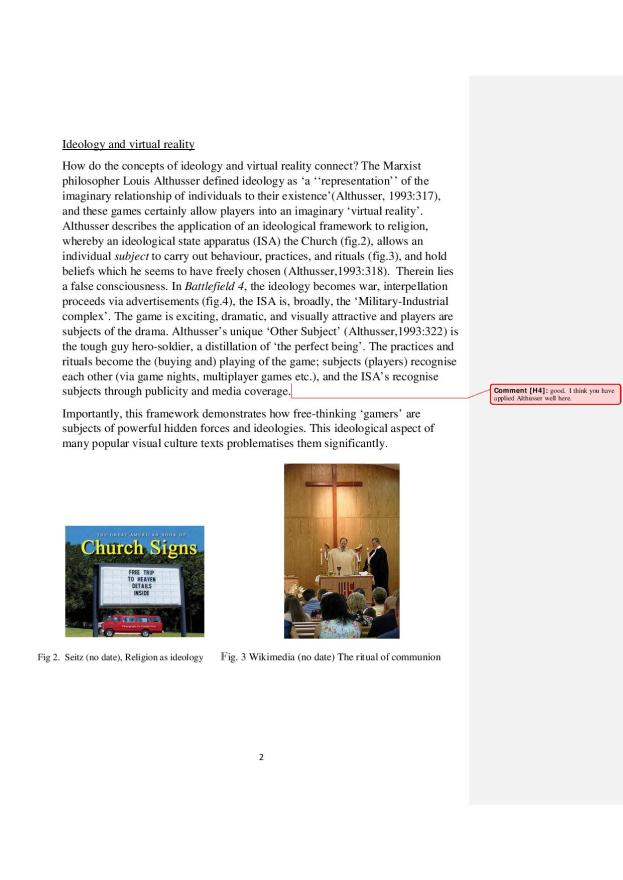






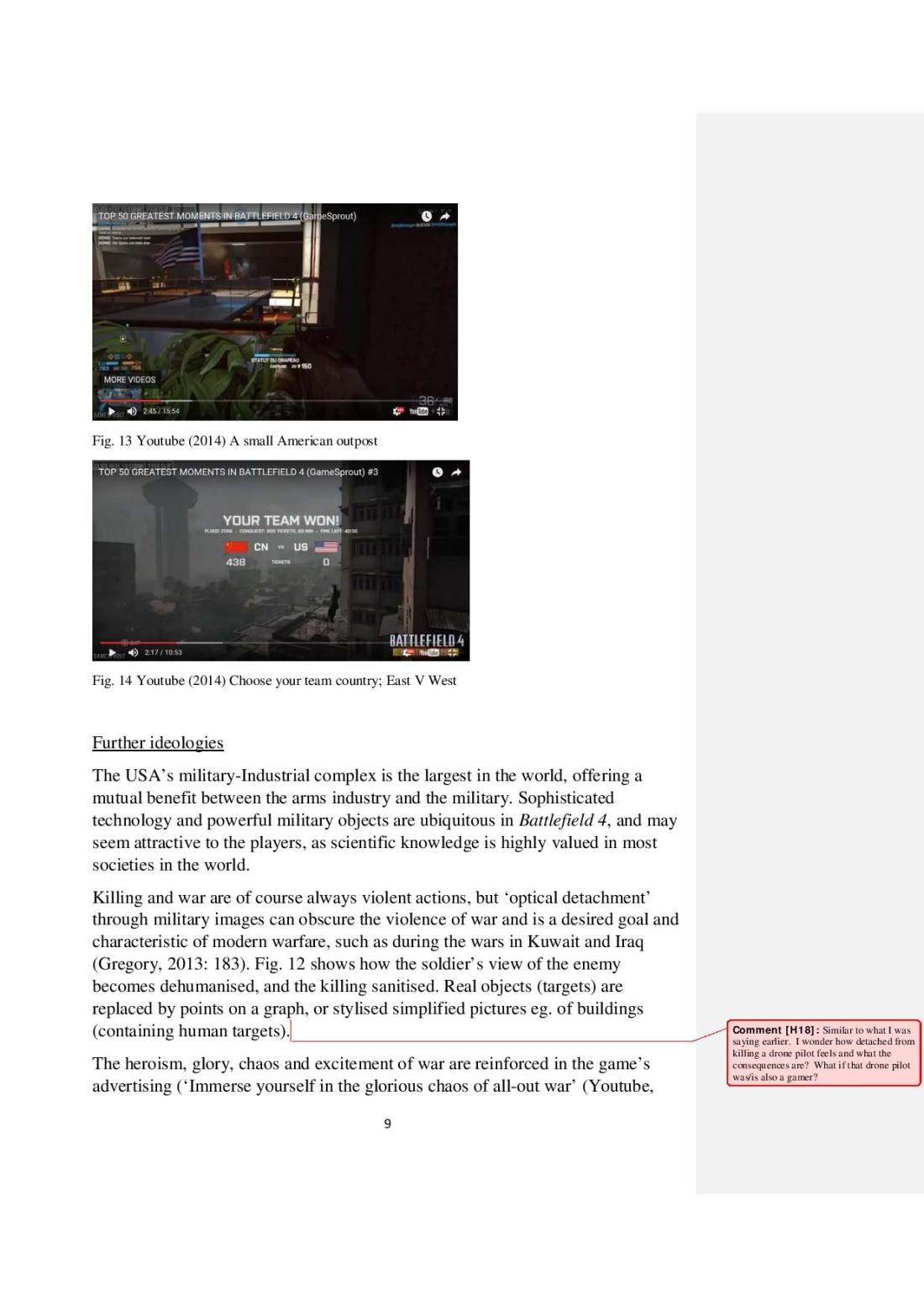
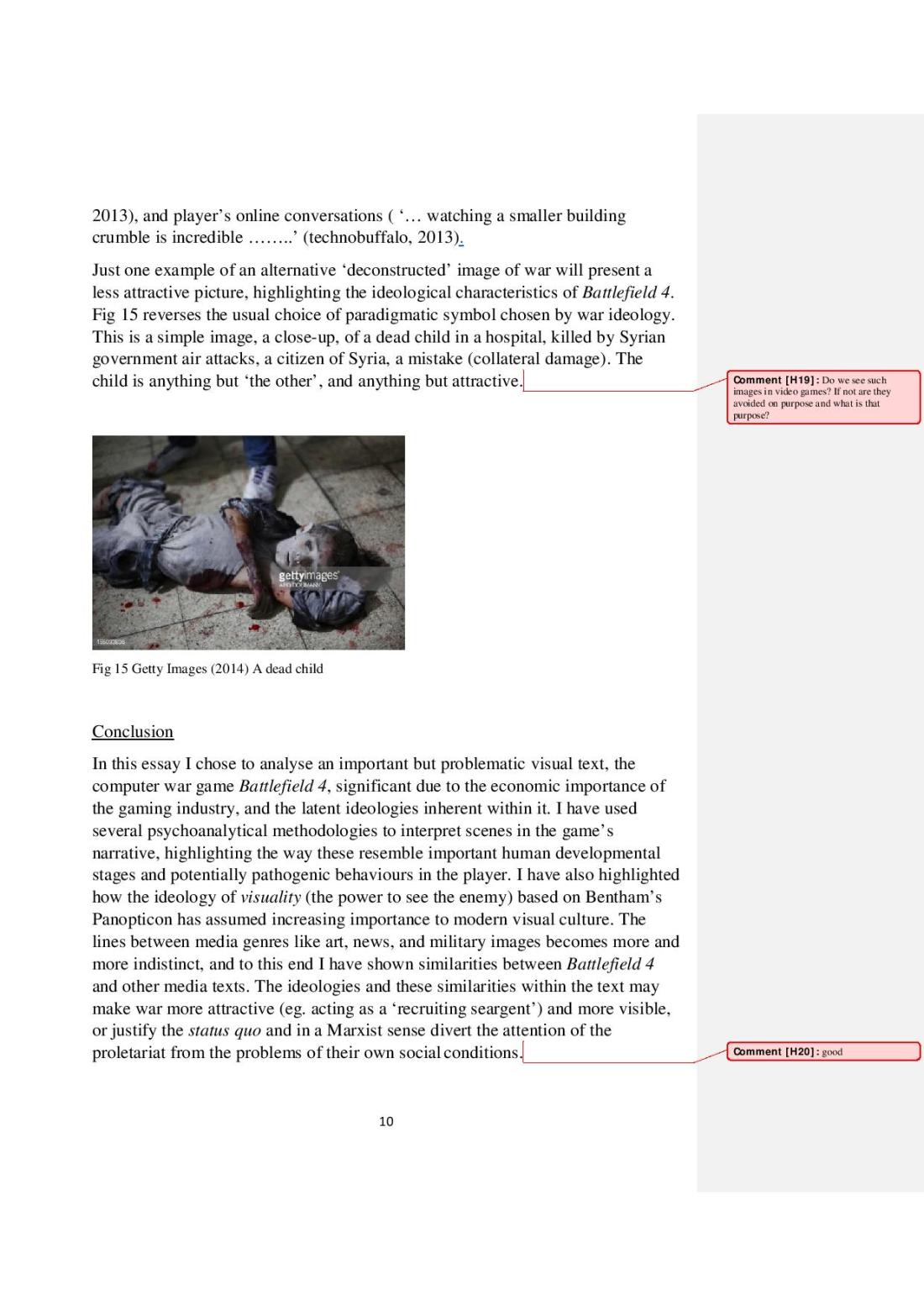
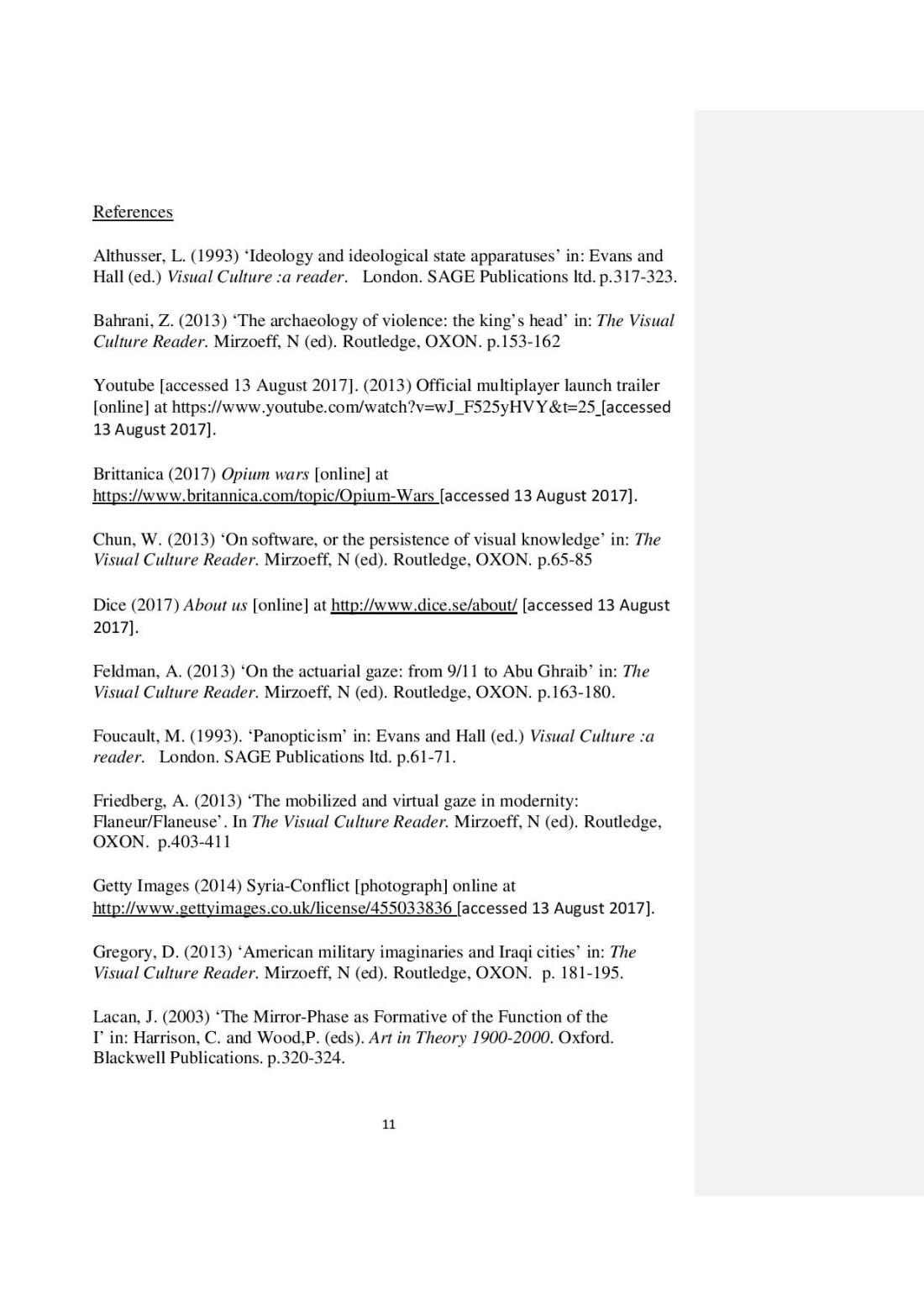

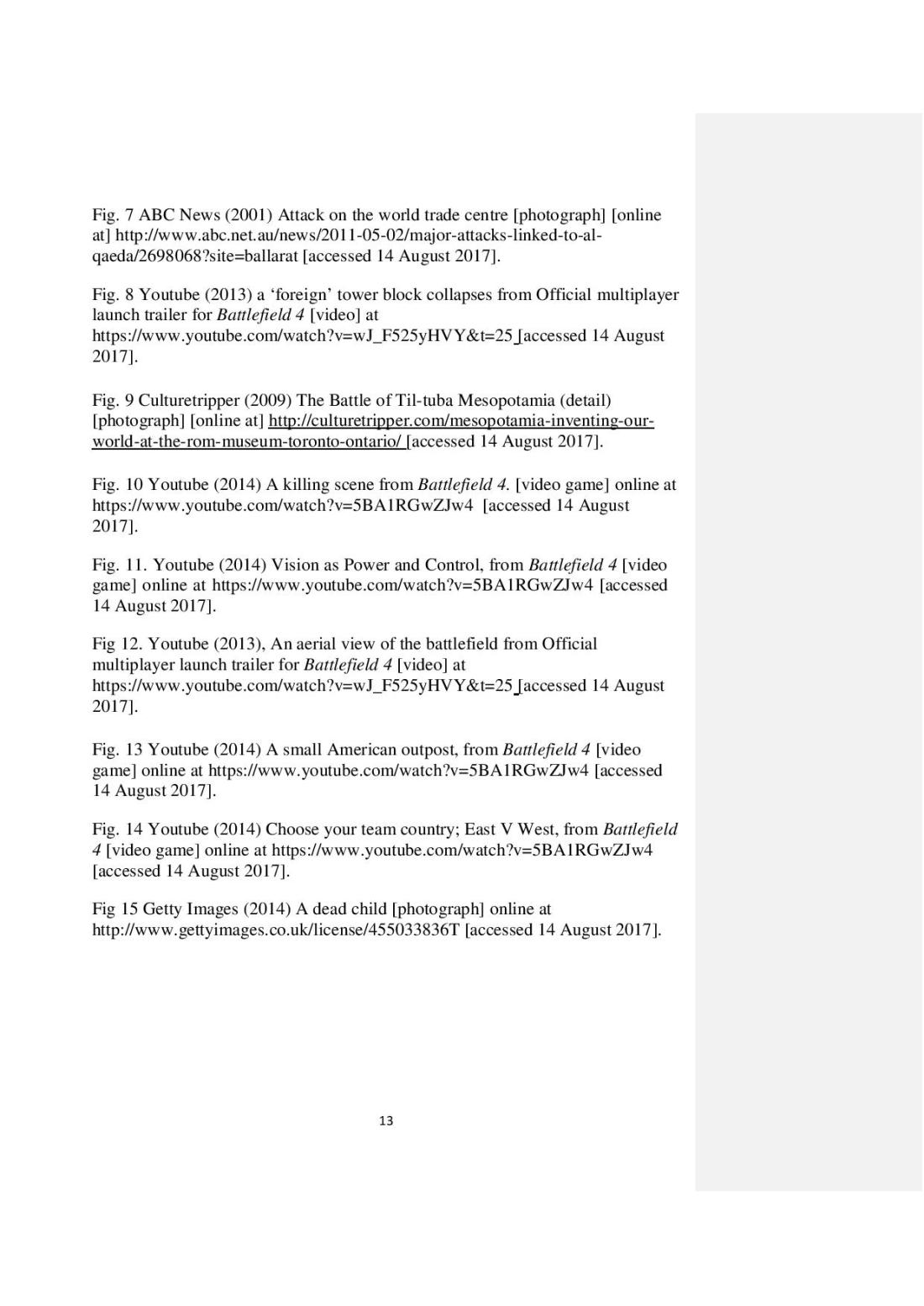
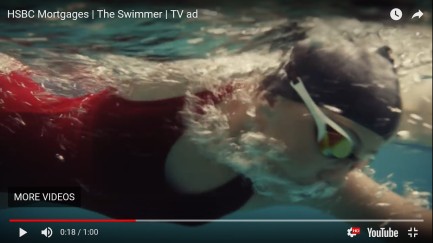


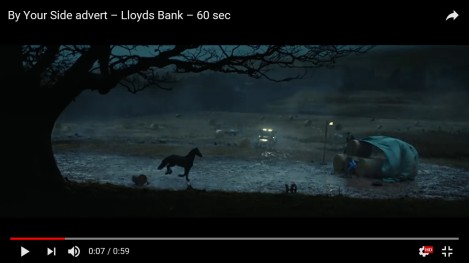
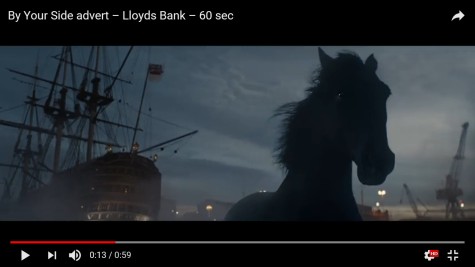
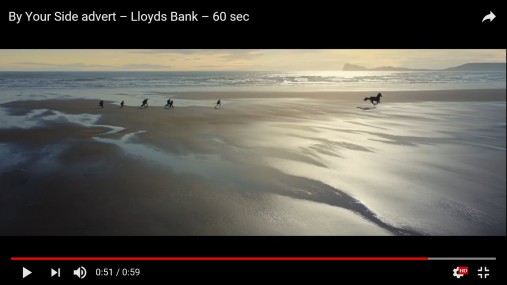


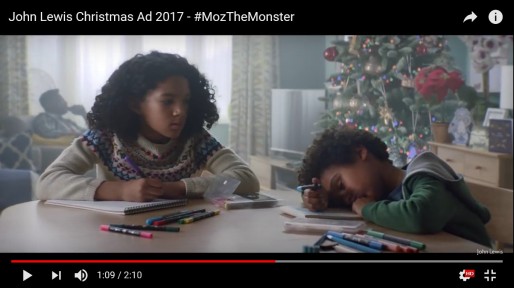




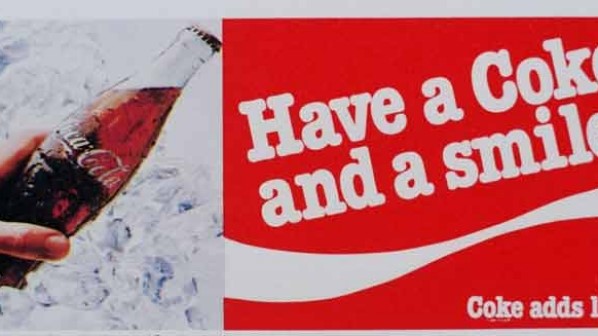




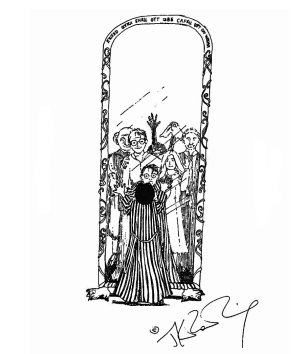





 Fig. 4 Signs of the primitive in the white farmer’s house
Fig. 4 Signs of the primitive in the white farmer’s house


 Fig. 8 The media deliver the bourgeoisie message about the crisis.
Fig. 8 The media deliver the bourgeoisie message about the crisis. Fig. 9 A bug lands on the camera to deconstruct the film?
Fig. 9 A bug lands on the camera to deconstruct the film? Fig. 10 A Zombie hunting gang
Fig. 10 A Zombie hunting gang

 Fig. 13 Chief Mclelland tells the man to shoot Ben
Fig. 13 Chief Mclelland tells the man to shoot Ben




